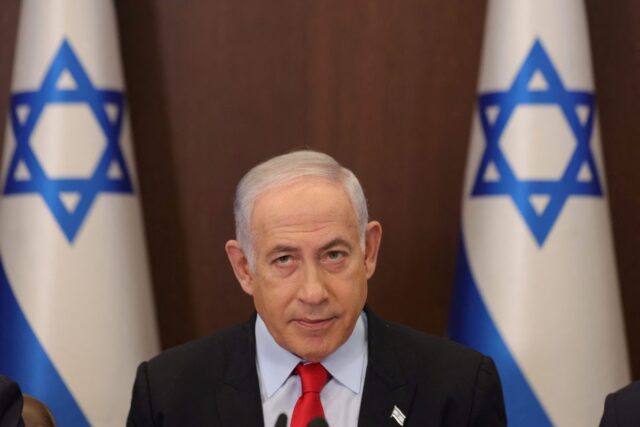Israel’s attack on Iran on Saturday morning, coordinated with Washington and limited to missile and air defense sites, was more restrained than many expected and could help diplomatic efforts to free hostages and limit fighting in both Lebanon and Iran. as in the Gaza Strip.
The attack was a response to Iranian missiles fired at Israeli territory in early October, in retaliation against the Prime Minister Benjamin Netanyahu’s government incursion into Lebanondays before.
Israel waited until US Secretary of State Antony Blinken returned to Washington after four days of consultations with Israeli and Arab allies.
In a series of raids under cover of darkness, and likely over hostile territories including Syria and Iraq, dozens of Israeli warplanes flew thousands of kilometers. Refueling in the air, they targeted military installations in three provinces in retaliation for Iran’s October 1 launch of ballistic missiles at Israel.
Israel distributed videos of Netanyahu and military chiefs coordinating from a Defense Ministry bunker, a rare acknowledgment of an attack on the Islamic Republic and an expansion of what has so far been mostly a shadow war.
Important installations were avoided
But it avoided oil, nuclear and civilian facilities, in line with a request from US President Joe Biden’s administration, which is leading attempts to find solutions to the crises triggered by the brutal attack on Israel a year ago by Iran’s proxy in Gaza , Hamas. Defense Minister Yoav Gallant said he was in close contact with US Defense Secretary Lloyd Austin throughout.
Israel’s restraint on Saturday allowed Iran to dismiss the attack as ineffective, possibly setting the stage for a restrained response or no response at all.
Iran’s first vice president, Mohammad Reza Aref, posted on his X account: “Iran’s power has humiliated the enemies of the motherland,” while state TV interviewed children going to school and people exercising. The official Tasnim news agency spoke only about “reserving the right to respond”.
Israeli spokespeople portrayed the attack differently, as evidence of Israel’s deep knowledge of Iran’s military outposts, its ability to strike anywhere in the country and to send a message to the regime in Tehran.
“The ball is now in the Iranian court,” Amos Yadlin, former director of Israeli military intelligence, said on Channel 12 even before the attack was over. The goal, he said, was to make clear what Israel is capable of doing.
The operation was codenamed “Days of Penance,” a reference to the period in the Jewish calendar that had just ended and suggesting that it was intended to bring about repentance, reexamination, and new resolutions—perhaps among friend and foe alike.
US regional allies such as Saudi Arabia condemned the Israeli attack as a violation of Iranian sovereignty, but the suspicion among Israeli officials was that the country was comfortable with the level of Israel’s response.
Israeli political leaders to Netanyahu’s right and left criticized the attack as a missed opportunity to make a more substantial strategic point that exhibited what they characterized as indecisiveness.
But others have noted that Netanyahu’s scathing attacks on Lebanon’s Hezbollah in recent weeks have made a big difference in restoring Israel’s deterrence, shattered by the Oct. 7 attack by Hamas that killed 1,200 people, with a further 250 kidnapped.
Hezbollah has been bombing Israel for a year in solidarity with Palestinians in Gaza, who have been targets of Israeli attacks. Both organizations, considered terrorist groups by the U.S. and others, say their goal is the destruction of the Jewish state.
Israel not only sent troops into southern Lebanon, but also killed and injured the group’s top leaders and eliminated many missile launchers and storage sites.
Hezbollah reaction
It has long been predicted that if Israel attacked Iran, Hezbollah would fire thousands of long-range missiles at Israel’s population centers for weeks, causing serious damage and deaths.
So far, Hezbollah has only managed to fire a handful of such missiles. With the Hamas militia also heavily degraded, its threat is greatly reduced. Israel’s war against Hamas has killed some 42,000 Palestinians, according to Hamas officials, who do not distinguish between combatants and civilians. It also reduced much of the coastal strip to rubble in a war that was strongly condemned around the world.
The US and other powers are trying to restore Lebanon’s army and political structure and push Hezbollah away from the border with Israel. They also hope to bring home the approximately 100 Israeli hostages still held by Hamas and make arrangements for the reconstruction and governance of the Gaza Strip that exclude Hamas and the Israeli army.
Israel’s limited response on Saturday could accelerate these processes, including the entry of the United Arab Emirates and other Gulf nations into the reconstruction of the Gaza Strip, if a ceasefire can be negotiated.
But a deal is unlikely to come to fruition before the US presidential elections on November 5 — and Israel’s next steps will likely depend on who wins, Donald Trump or Kamala Harris.





